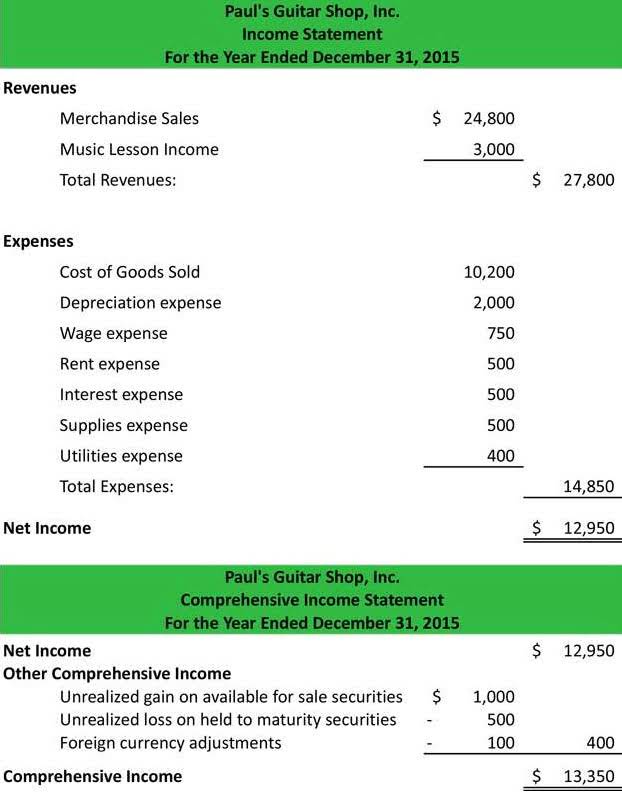
In the case of a disregarded entity (DE), the partnership will enter the TIN of the beneficial owner of the DE in item E and the beneficial owner’s address in item F. If the box in item D is checked, you’re a partner in https://www.bookstime.com/ a PTP and must follow the rules discussed earlier under Publicly traded partnerships. Your distributive share of losses attributable to all of the partnership’s trades or businesses may be limited under section 461(l).
All You Need To Know About Vitamin K1
These records may then be used in official financial reports such as balance sheets and income statements. The amounts reported reflect your pro rata share of the S corporation’s W-2 wages allocable to qualified payments of each qualified trade or business, or aggregation. The amounts reported reflect your pro rata share of the S corporation’s W-2 wages allocable to the QBI of each qualified trade or business, or aggregation. Generally, you must increase the basis of your stock by the amount shown, but don’t include it in income on your tax return. Report on your return, as an item of information, your share of the tax-exempt interest received or accrued by the corporation during the year.
Cash Basis Accounting
If the sum of lines 12 and 13, column C, doesn’t exceed the amount on line 11a, then enter the amount of line 12, column C, in the corresponding line of column D. Enter the amount by which your cumulative depletion deduction (other than oil and gas depletion) exceeds your proportionate share of basis in the property subject to depletion. Negative amounts (decreases what does k1 mean to basis) are entered on lines 8 through 10. Enter on lines 4a through 4n all separately figured and non-separately figured items of income from Schedule K-1. However, whether a partner qualifies as a limited partner for purposes of self-employment tax depends on whether the partner meets the definition of a limited partner under section 1402(a)(13).

What Tax Forms to File as a First-Time Business Owner
If the S corporation was a patron of an agricultural or horticultural cooperative (specified cooperative), you must use Form 8995-A to figure your QBI deduction. In addition, you must complete Schedule D (Form 8995-A), Special Rules for Patrons of Agricultural or Horticultural Cooperatives, to determine your patron reduction. The corporation will report any information you need to figure the interest charge under section 453A(c) with respect to certain installment sales. This information will include the following from each Form 6252 where line 5 is greater than $150,000. The corporation will report any information you need to figure the interest due under section 453(l)(3) with respect to the disposition of certain timeshares and residential lots on the installment method. See section 453(l)(3) for details on how to figure the interest.

Managing remote 1040 client collaboration for today’s tax professionals
Use the amounts reported and the amounts on the attached statement to help you figure the net amount to enter on Form 6251, line 2t. Portfolio income or loss (shown in boxes 5 through 9b and in box 11, code A) isn’t subject to the passive activity limitations. Portfolio income includes income (not derived in the ordinary course of a trade or business) from interest, ordinary dividends, annuities or royalties, and gain or loss on the sale of property that produces such income or is held for investment. Similar to a partnership, S corporations (or S corps) file an annual tax return using Form 1120S.
- If you’re an individual and the passive activity rules don’t apply to the amounts shown on your Schedule K-1, take the amounts shown and enter them on the appropriate lines of your tax return.
- Some trusts and estates pay taxes on some income and pass other income through to the beneficiaries, depending on the type of income and governing documents of the trust or estate.
- The following additional limitations apply at the partner level.
- They report to the IRS, and individual partners, shareholders, and beneficiaries, the amounts of income, losses, deductions, credits and other distributions they may have received.
- Use the information in the attached statement to correctly determine your passive activity limitations.
- Owner-shareholders in an S corp receive a K-1 that lists each owner’s share of the company’s profits or losses for the year.
Partner’s Data Controls Loss Write-offs
Amounts with code ZZ are other items of income, gain, or loss not included in boxes 1 through 9 or in box 10 using codes A through S. The corporation should give you a description and the amount of your share for each of these items. The corporation will provide your share of its section 951(a)(1)(B) inclusions.
Start-up costs
- Part I deals with the Partnership information, which will be completed by Yieldstreet to identify the individual SPV name and tax identification number, depending on the investment opportunity that this K-1 is for.
- Thus, a net passive loss from a PTP may not be deducted from other passive income.
- Certain services are offered through Synapse Financial Technologies, Inc. and its affiliates (collectively, “Synapse”) as well as certain third-party financial services partners.
- Usually expressed as a percentage, return on investment (ROI) describes the level of profit or loss generated by an investment.
- Matos began her career at Ernst & Young, where she audited a diverse set of companies, primarily in consumer products and media and entertainment.
- For all other partners, the partnership will enter the partner’s employer identification number (EIN).
It is the shareholder’s responsibility to consider and apply any applicable limitations. A closely held business may elect S corporation status and still be run as a partnership. Owner-shareholders in an S corp receive a K-1 that lists each owner’s share of the company’s profits or losses for the year.
- Any information you need to complete a disclosure statement for reportable transactions in which the corporation participates.
- Qualified persons include any persons actively and regularly engaged in the business of lending money, such as a bank or savings and loan association.
- If you’re an individual, report the interest on Schedule 2 (Form 1040), line 14.
- In Part I of Form K-1, you should see spaces to add your Employer Identification Number, business name, and address.
- Those receiving K-1-reported income should consult with a tax professional to determine if their proceeds trigger the alternative minimum tax.
- Use the information reported in box 15 (as well as your adjustments and tax preference items from other sources) to prepare your Form 6251, Alternative Minimum Tax—Individuals, or Schedule I (Form 1041), Alternative Minimum Tax—Estates and Trusts.
If the partner is a DE, such as a single-member LLC that didn’t elect to be treated as a corporation, the partnership will check the DE box and enter the name and TIN of the DE. The maximum special allowance that single individuals and married individuals filing a joint return can qualify for is $25,000. The maximum is $12,500 for married individuals who file separate returns and who lived apart at all times during the year. The maximum special allowance for which an estate can qualify is $25,000 reduced by the special allowance for which the surviving spouse qualifies. Generally, any work that you or your spouse does in connection with an activity held through a partnership (where you own your partnership interest at the time the work is done) is counted toward material participation.